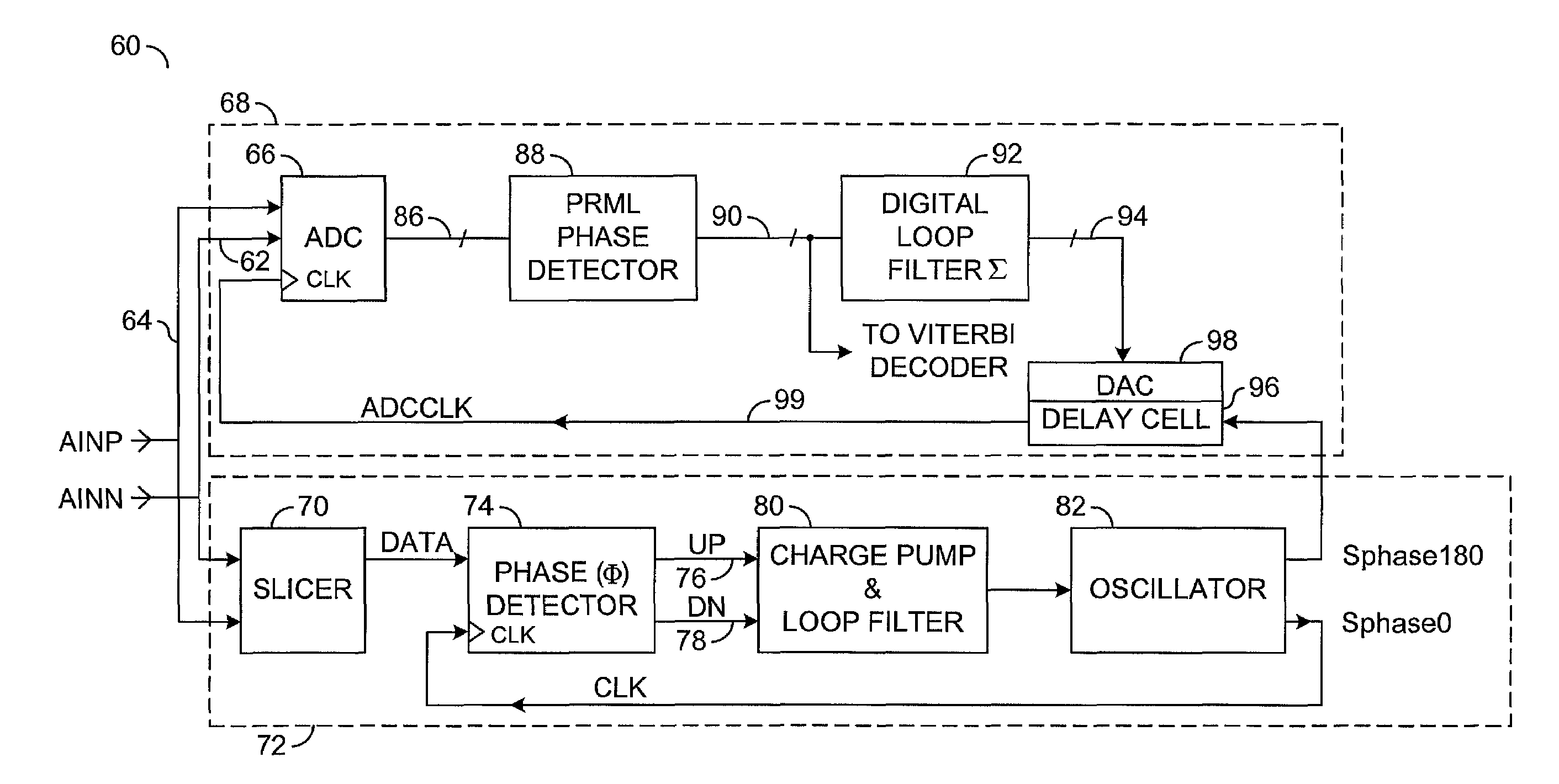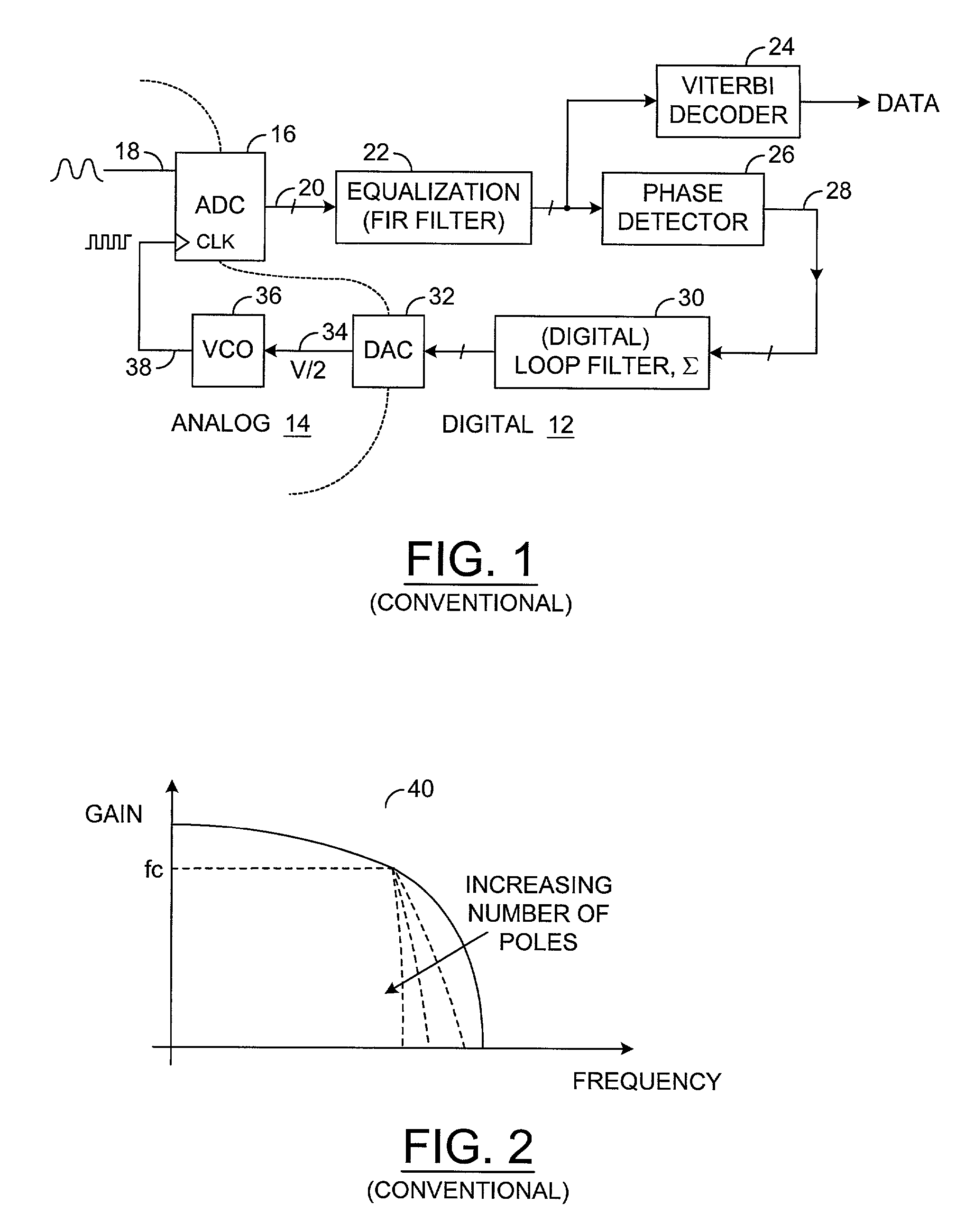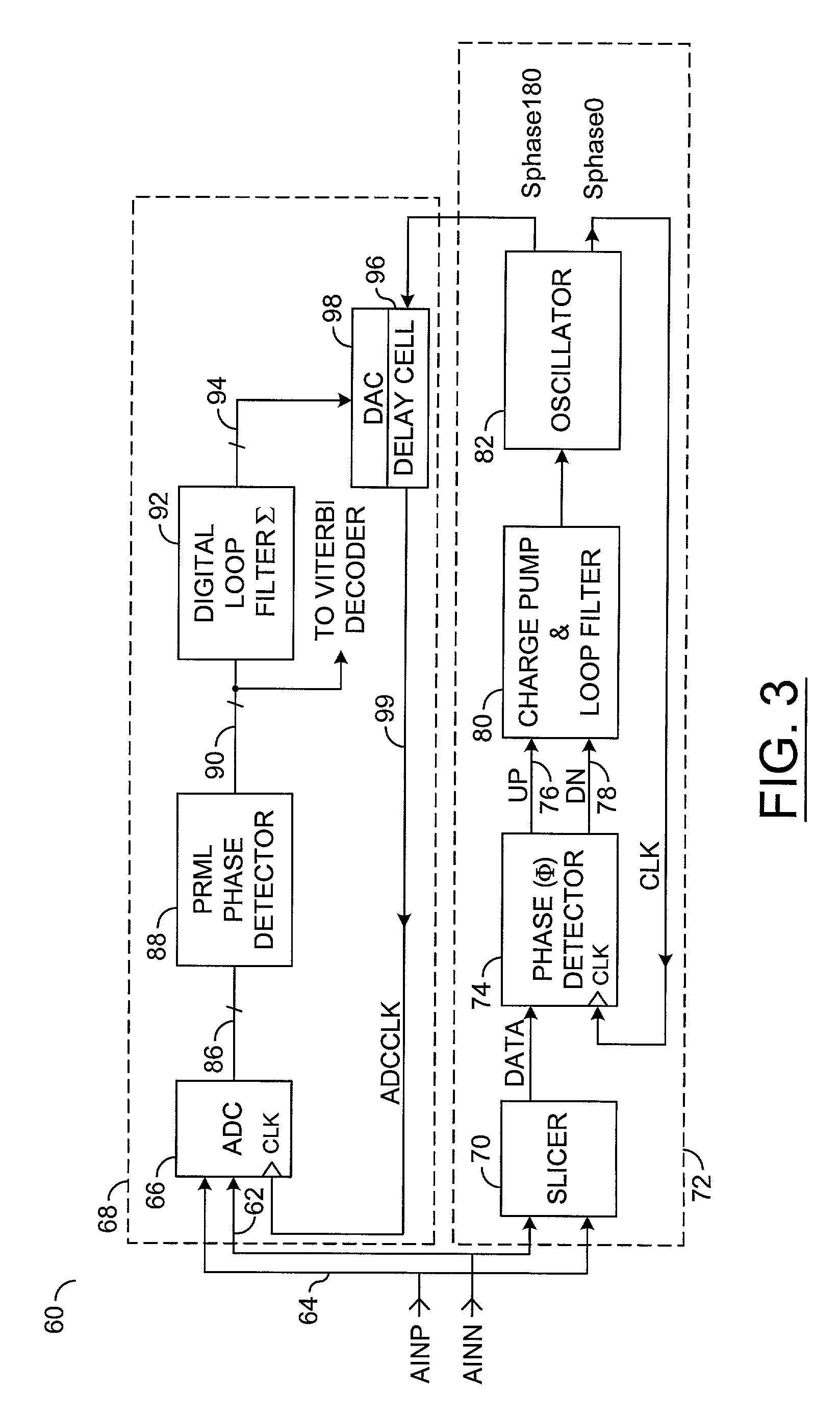Apparatus and method for acquiring phase lock timing recovery in a partial response maximum likelihood (PRML) channel
a phase lock and recovery technology, applied in the field of applicability and method of acquiring phase lock timing recovery in a digital channel, can solve the problems of head oscillation between read and write functions, no common signal processing platform, and affecting both device development and commercial availability, so as to mitigate latency issues, facilitate processing, and tolerate latency issues.
- Summary
- Abstract
- Description
- Claims
- Application Information
AI Technical Summary
Benefits of technology
Problems solved by technology
Method used
Image
Examples
Embodiment Construction
[0042]For a complete understanding, reference is initially made to FIG. 1 that shows a schematic block diagram of a conventional PRML (digital) PLL 10. The PRML PLL 10 includes digital circuitry 12 and some analog circuitry 14. An analog to digital converter (ADC) 16 receives an analog waveform 18 as a first input. A sample sequence 20 (in the form of a parallel data word) is output from the ADC 16, with the sample sequence 20 applied to equalization circuitry 22, such as an FIR filter. An output from the equalization circuitry is applied both to a Viterbi decoder 24 for data recovery and also to a phase detector 26. A phase error control word 28 is communicated via a loop filter (Σ) 30 to a digital to analog converter (DAC) 32. Typically, the loop filter 30 employs an accumulator or summer, which is itself realized with a feedback path in which an output from a clocked flip-flop is combined with an input to the flip-flop. An output 34 from the DAC 32 is applied to a voltage control...
PUM
| Property | Measurement | Unit |
|---|---|---|
| phase | aaaaa | aaaaa |
| frequency | aaaaa | aaaaa |
| input current | aaaaa | aaaaa |
Abstract
Description
Claims
Application Information
 Login to View More
Login to View More - R&D
- Intellectual Property
- Life Sciences
- Materials
- Tech Scout
- Unparalleled Data Quality
- Higher Quality Content
- 60% Fewer Hallucinations
Browse by: Latest US Patents, China's latest patents, Technical Efficacy Thesaurus, Application Domain, Technology Topic, Popular Technical Reports.
© 2025 PatSnap. All rights reserved.Legal|Privacy policy|Modern Slavery Act Transparency Statement|Sitemap|About US| Contact US: help@patsnap.com



